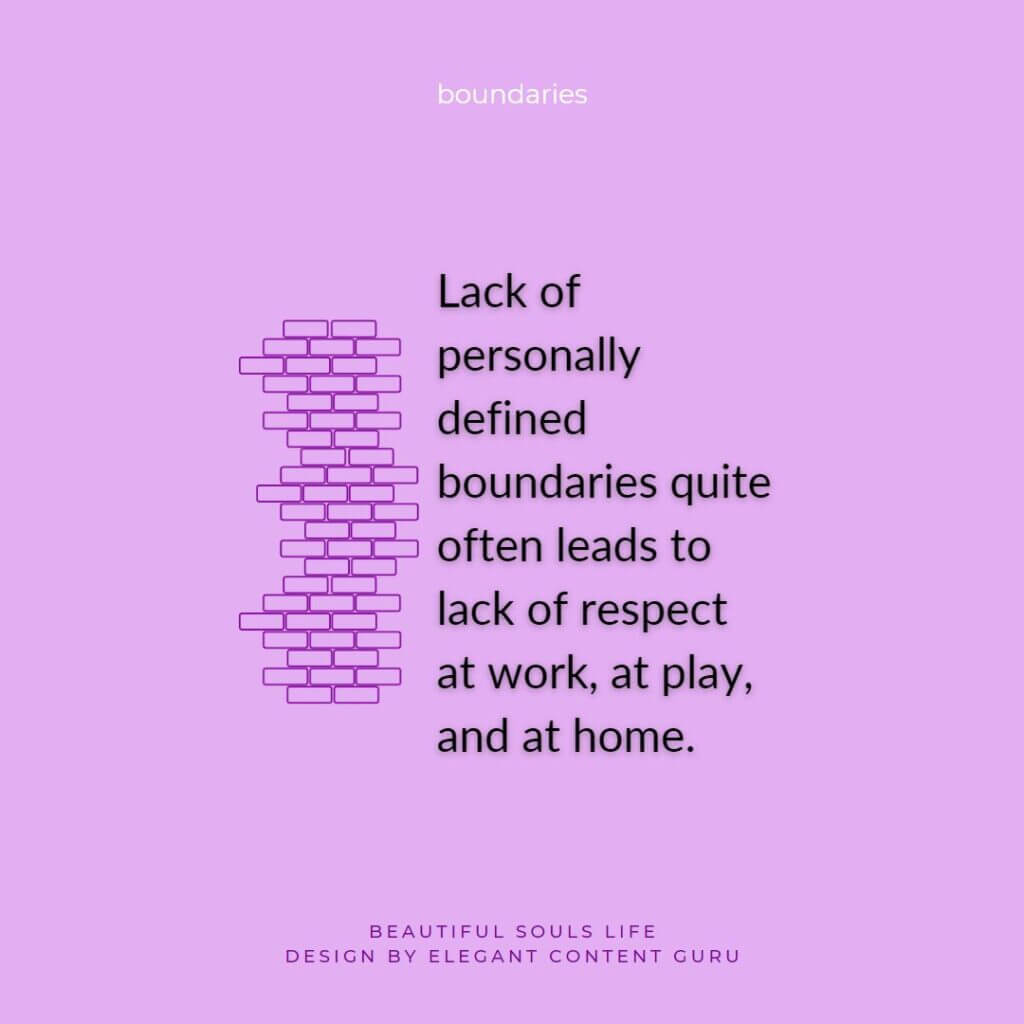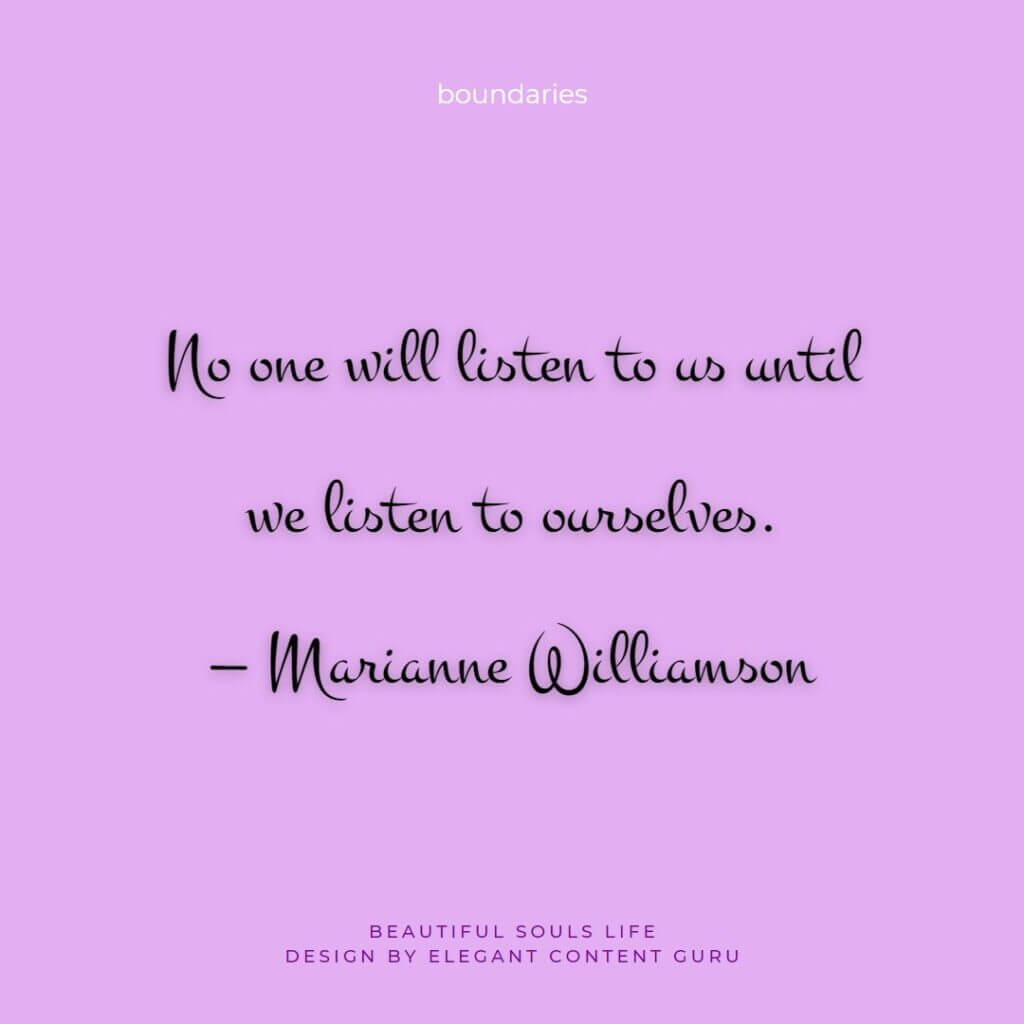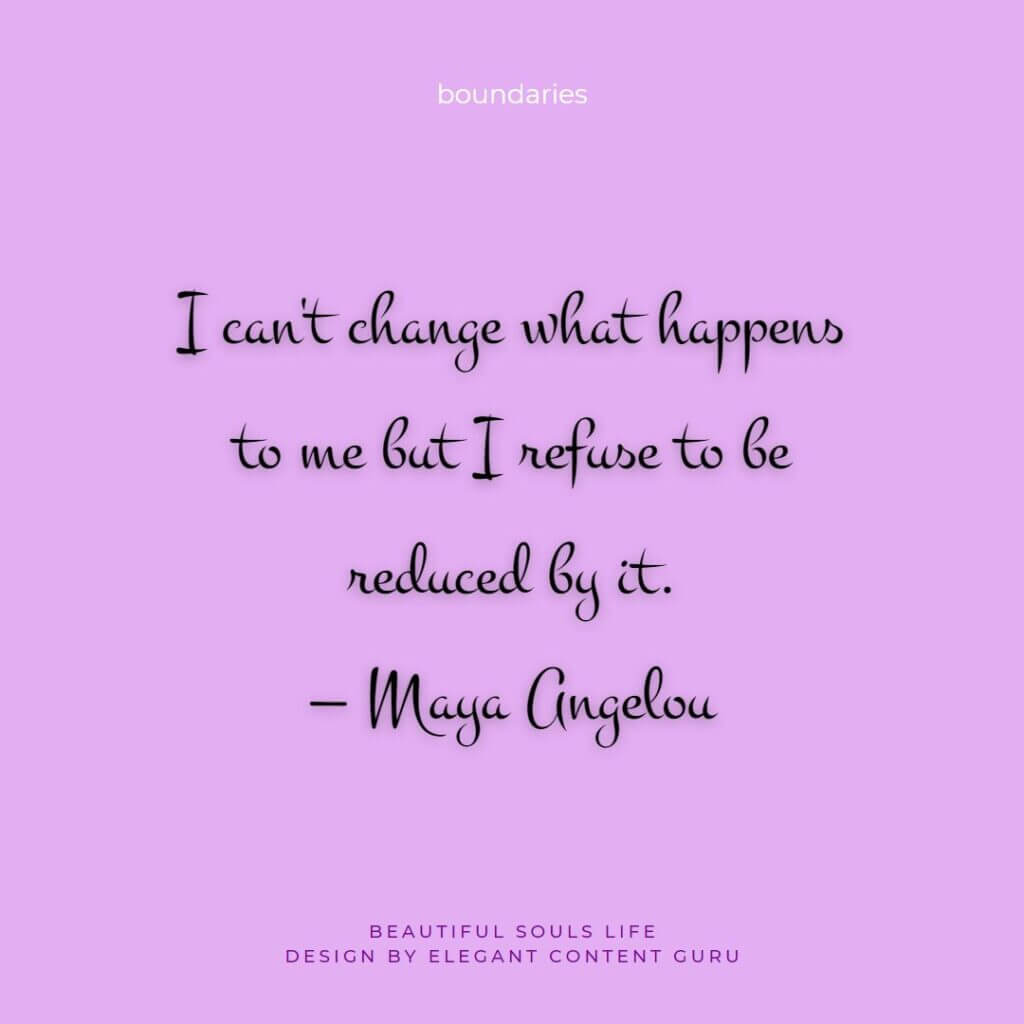You know that tiny wince when your boundaries are overrun. It’s instinctual for most to be aware of boundary issues but perhaps you don’t know the signs or perhaps you think setting boundaries is kind of cold and impersonal.
Of course, if you are empathic or highly sensitive it’s even more important to set boundaries because you take everything in and want to help. Everyone. So, knowing how to discern your own healthy boundaries and having respect for other people’s boundaries kind of go hand in hand – right? But, honestly, setting boundaries is one of the hardest things for me.
Unfortunately, if you’re uncomfortable with setting boundaries or simply don’t know how to, things build up and then blow out in a burst of anxiety. No one wants that to happen and when it happens you feel worse than you did before. Then, it becomes a behavioral circle of being trampled on, blowing up, feeling worse, over-compensating for feeling worse, then it begins again.
Oh Wow! Why don’t we just jump off that merry-go-round and start setting some healthy boundaries?
Mastering the Art of Self-Talk: 12 Methods for Healthy Boundary Setting
We all have an inner voice that guides our thoughts and actions. Sometimes, that voice can be negative and self-critical, leading to feelings of anxiety and self-doubt. But what if you could learn to master your self-talk and use it to set healthy boundaries in your life? Welcome to the art of self-talk, where you can learn to become your own best friend and ally. In this article, we’ll explore 12 methods for healthy boundary setting that will help you enhance your self-talk and improve your overall well-being. From reframing negative thoughts to practicing self-compassion, these techniques will empower you to take control of your inner dialogue and build a stronger sense of self. So, let’s dive in and discover how to master the art of self-talk for a happier, healthier you!
The Importance of Self-Talk in Boundary Setting
Self-talk is a powerful tool that we all possess, but not everyone knows how to use it effectively. The way we talk to ourselves can have a profound impact on our mood, behavior, and overall well-being. When we engage in negative self-talk, we are essentially telling ourselves that we are not good enough, smart enough, or capable enough to achieve our goals. This can lead to feelings of anxiety, depression, and even physical illness.
On the other hand, positive self-talk can help us build confidence, resilience, and a sense of self-worth. When we talk to ourselves in an encouraging and compassionate way, we are more likely to take risks, pursue our passions, and set healthy boundaries. By mastering the art of self-talk, we can learn to use this powerful tool to our advantage and create a happier, healthier life.
Understanding Negative Self-Talk and Its Impact on Boundaries
Negative self-talk is the voice inside our head that tells us we are not good enough or that we don’t deserve happiness and success. It can be triggered by past experiences, fear of failure, or low self-esteem. When we engage in negative self-talk, we are essentially sabotaging ourselves and limiting our potential. This can have a significant impact on our ability to set and maintain healthy boundaries.
For example, if we constantly tell ourselves that we are not worthy of love and respect, we are more likely to tolerate abusive or disrespectful behavior from others. Similarly, if we believe that we are not capable of achieving our goals, we are more likely to give up when faced with obstacles or setbacks. By learning to recognize and reframe negative self-talk, we can break free from these limiting beliefs and create a healthier, more fulfilling life.
Identifying Your Personal Boundaries
Before you can set healthy boundaries, you need to know what they are. Personal boundaries are the limits and guidelines that we set for ourselves to protect our physical, emotional, and mental well-being. They can include things like saying no to requests that make us uncomfortable, speaking up when someone crosses a line, or taking time for self-care and relaxation.
To identify your personal boundaries, it’s helpful to reflect on your values, needs, and priorities. What do you value most in life? What makes you feel happy, fulfilled, and at peace? What are your non-negotiables when it comes to relationships, work, or personal growth? Once you have a clear understanding of your personal boundaries, you can begin to set them in a way that feels authentic and empowering.
Setting Boundaries with Yourself
One of the most important aspects of self-talk is learning to set boundaries with yourself. This means being honest with yourself about your limitations, needs, and goals, and taking action to honor them. For example, if you struggle with procrastination, you may need to set boundaries around your use of technology or social media to stay focused and productive. If you tend to put others’ needs before your own, you may need to set aside time each day for self-care and relaxation.
Setting boundaries with yourself also means holding yourself accountable for your actions and decisions. When you make a commitment to yourself, it’s important to follow through, even when it’s challenging or uncomfortable. By honoring your personal boundaries, you can build self-trust and confidence, and create a more fulfilling life.
Setting Boundaries with Others
In addition to setting boundaries with yourself, it’s important to set boundaries with others. This means being clear and assertive about your needs, expectations, and limits, and communicating them in a respectful and compassionate way. When you set boundaries with others, you are essentially teaching them how to treat you.
For example, if a friend consistently cancels plans at the last minute, you may need to set a boundary around your availability and expectations for follow-through. If a co-worker frequently interrupts you during meetings, you may need to set a boundary around respectful communication and active listening. By setting boundaries with others, you can create healthier, more satisfying relationships and build mutual respect and understanding.
Communicating Your Boundaries Effectively
Setting boundaries is one thing, but communicating them effectively is another. It’s important to be clear, direct, and respectful when communicating your boundaries to others. Avoid blaming, shaming, or attacking, and instead focus on expressing your own needs and expectations.
When communicating your boundaries, it’s also helpful to provide context and explanation for why they are important to you. This can help others understand your perspective and be more willing to honor your boundaries. And remember, setting boundaries is not about controlling or manipulating others, but rather about taking responsibility for your own well-being and creating healthy relationships.
Setting Boundaries • You've Got This Share on XSaying No: The Power of Setting Boundaries
One of the most challenging aspects of setting boundaries is saying no. Whether it’s to a friend who wants to borrow money, a co-worker who wants you to take on extra work, or a family member who wants you to attend a social gathering, saying no can be uncomfortable and even scary. But it’s also one of the most empowering things you can do for yourself.
When you say no to something that doesn’t align with your personal boundaries or values, you are essentially saying yes to yourself. You are honoring your own needs and priorities, and creating space for the things that truly matter to you. Saying no can be difficult at first, but with practice, it can become a powerful tool for building self-respect and creating a more fulfilling life.
Practicing Self-Compassion in Boundary Setting
Setting boundaries can be a challenging and sometimes uncomfortable process. It can bring up feelings of guilt, self-doubt, and even shame. That’s why it’s important to practice self-compassion in boundary setting. This means treating yourself with kindness, understanding, and forgiveness, and acknowledging that setting boundaries is a sign of strength, not weakness.
When you practice self-compassion, you are essentially giving yourself permission to make mistakes and learn from them. You are also acknowledging that you deserve respect and love, just like everyone else. By practicing self-compassion, you can build resilience and self-esteem, and create a more positive, nurturing relationship with yourself.
Surrounding Yourself with Supportive People
Another important aspect of boundary setting is surrounding yourself with supportive people. This means seeking out friends, family, or mentors who respect your boundaries, encourage your growth, and provide a safe and loving space for you to be yourself. When you surround yourself with supportive people, you are more likely to feel empowered, inspired, and motivated to pursue your goals and dreams.
On the other hand, when you surround yourself with toxic or unsupportive people, you may find it more difficult to set and maintain healthy boundaries. These people may challenge your decisions, belittle your accomplishments, or even try to manipulate or control you. By prioritizing relationships that are positive and enriching, you can create a stronger sense of self and a more fulfilling life.
Staying Committed to Your Boundaries
Finally, it’s important to stay committed to your boundaries, even when it’s challenging. Setting boundaries is a lifelong process, and it requires ongoing effort and self-reflection. You may encounter setbacks or obstacles along the way, but if you stay committed to your personal values and priorities, you can overcome them and create a more fulfilling life.
One way to stay committed to your boundaries is to practice self-awareness and mindfulness. Check in with yourself regularly to see how you are feeling and whether your boundaries are still aligned with your needs and goals. If you find that your boundaries need adjusting, be gentle with yourself and make the necessary changes. Remember, setting and maintaining healthy boundaries is a journey, not a destination.
Conclusion: Integrating Healthy Self-Talk and Boundary Setting into Your Daily Life
In conclusion, mastering the art of self-talk and setting healthy boundaries is a powerful way to create a happier, healthier life. By learning to re-frame negative thoughts, communicate your needs effectively, and practice self-compassion, you can take control of your inner dialogue and build a stronger sense of self. So, take some time to reflect on your personal boundaries, and start practicing the techniques outlined in this article. With patience, persistence, and self-love, you can master the art of self-talk and set healthy boundaries for a life that is fulfilling, joyful, and authentic.
Positive Self-Talk Quotes









Thank you for reading!
It is our wish that you find this post enlightening and helpful. If you have any questions or suggestions, we love to hear from you in the comments below. Also, kindly accept our invitation to join our group on Facebook to surround yourself with kindred spirits and post your encouraging messages.













































